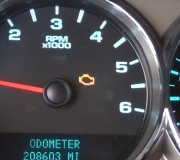Rats. That severely limits things. Your description sounds like a broken belt in a tire but that's going to occur all the time including at low speeds. For things to be that bad it shouldn't be too hard to find worn components during an inspection. The main suspects are upper and lower control arm bushings, upper and lower ball joints, and inner and outer tie rod ends.
If no problem is found there, check for excessive play in the steering gearbox although the symptom will normally be steering wander, not shaking.
Also check the idler arm for vertical movement. If you grab the center link next to where it connects to the idler arm, and try to force it up and down, if it moves more than say, ... Oh, ... 1/4", you will see the right wheel moving back and forth too. Come to think of it, that is probably going to be the most likely suspect in your search. I was the suspension and alignment specialist at a very nice Chrysler dealership for nine years but 99 percent of the trucks I worked on were 4wd models. They don't use idler arms.
Worn parts must never be overlooked or ignored, but for a 2wd truck, there's a chance it's something totally different. If this problem started after having an alignment, it is likely "caster" was adjusted too high. Caster has very little effect on tire wear but it affects how hard it is to turn the wheels, how fast they return to center by themselves, and steering wander. Increasing it in the '60s created a more stable vehicle but then power steering was added to counteract the harder steering. Still, when it is too high, hitting a bump or letting the steering wheel return to center by itself can cause the tires to move so fast that they overshoot center and go the other way, then they go back again. Road forces from driving down the road add energy to that oscillation just like a clock pendulum has it's natural frequency and a tiny spring adds all the energy necessary to keep it going.
If you need to replace parts, some will require the truck to be aligned after the repairs are completed. The ball joints are round balls that are centered in round holes centered in the middle of the housings which sit in round holes in the control arm. When you replace one on a Dodge truck, you can't help but put the spindle in the exact same place it was when that old ball joint was new. A new idler arm might reposition the height of the center link a small amount but it's going to change the direction the right wheel is steering very little. The clue to this is if the steering wheel is straight now, it will be straight after the parts are replaced. An alignment will still be a good idea but you don't have to panic if it isn't done right away.
Tie rod ends are a different story. Many people think you can count the number of turns to unscrew the old one, then screw the new one in the same amount, but that can never be trusted to come out right. An alignment is required right after a tie rod end is replaced.
Look at the tire wear too. If you rub your hand over the tread and feel a sharp raised edge in one direction but it feels smooth the other way, that's an indication "toe" is not correct. That will be a result of a worn idler arm.
Saturday, May 7th, 2011 AT 6:34 AM


